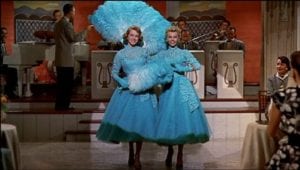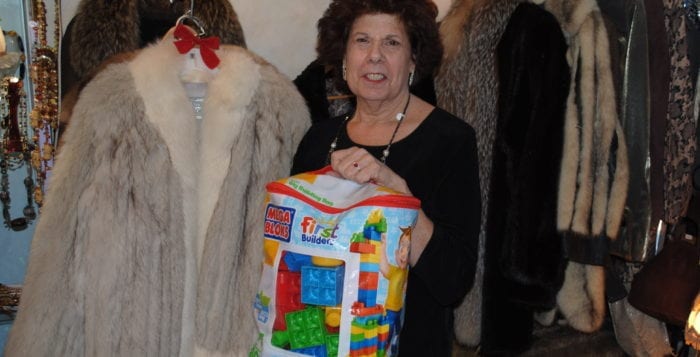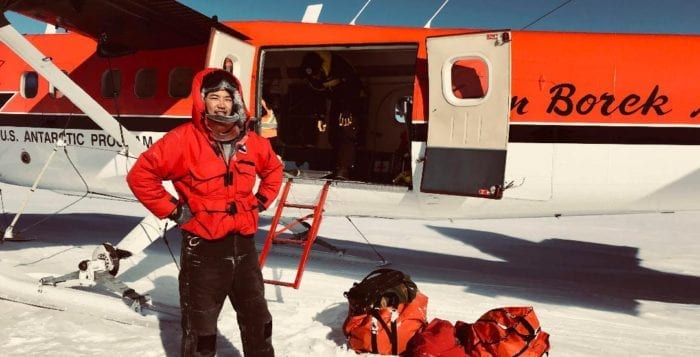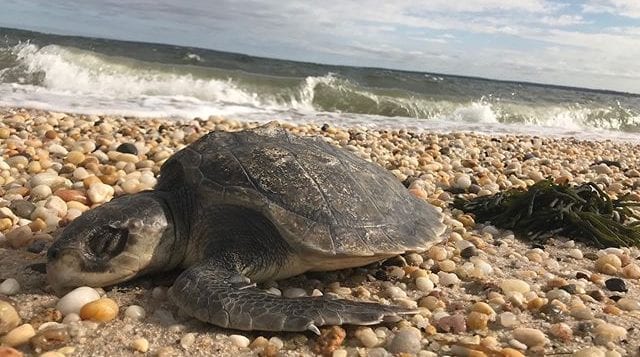The Suffolk County Vanderbilt Museum’s holiday centerpiece is the mansion of William and Rosamond Vanderbilt, decorated each year by local designers and garden clubs. Their creative touch brings additional charm and magic to the spectacular, 24-room, Spanish-Revival house, which is listed on the National Register of Historic Places.

Visitors can see the captivating results during guided tours now through Dec. 30 as lighted trees, ornaments, wreaths, ribbons, poinsettias, garlands, toys and elegantly wrapped faux gifts fill the rooms.
Stephanie Gress, the Vanderbilt’s director of curatorial affairs, and her staff decorated the Windsor Guest Room, Lancaster Room, Breakfast Nook and Northport Porch.
“Most of these garden clubs and designers have been decorating the mansion for more than 20 seasons,” Gress, said. “We look forward to seeing them each year, and to how they use their creative skills to bring elegant holiday charm to the house.”
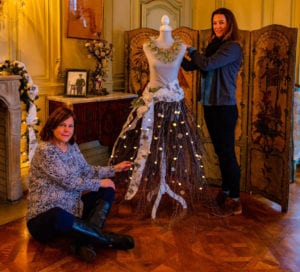
Centerport designers Mary Schlotter and her daughter Krishtia McCord — who operate Harbor Homestead & Co. — created a spectacular botanical dress that is displayed in Rosamond Vanderbilt’s bedroom.
“The challenge was to use natural materials for the skirt,” McCord said. “We used dried birch-branch tips and wove in strings of tiny clear lights.”
“We wanted to give the dress some sparkle,” Schlotter added. “So, we asked friends and family to share their grandmothers’ and mothers’ clip-on earrings and brooches and added them to the skirt. We made a botanical necklace using lamb’s ear leaves and hydrangea petals and accented it with pearls.”
They also fashioned a long flowing sash with wide, white birch bark-print ribbon and combined the same ribbon design with greenery to decorate the nearby mantelpiece.
The mother/daughter team made its first botanical dress for the Vanderbilt two years ago. “We like to use materials that will break down and not harm the Earth. We never use floral foam because it takes many years to break down. Instead, like many floral designers, we use chicken wire and thin tape.”
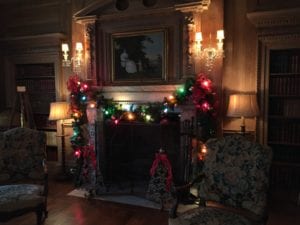
The two designers used antique chandelier crystals and other glass objects to decorate the fireplace mantel in Rosamond Vanderbilt’s stunning mirrored dressing room, where their original botanical dress is displayed.
Lorri Toth, who made the velvet top of Schlotter and McCord’s first botanical dress, created the dove-gray velvet top for the new dress. Toth, who worked in New York City fashion houses, now has her own design business, Couture Creations, in Huntington Village, and makes lots of wedding dresses, Schlotter said.
This year’s mansion decorators also include the Dix Hills Garden Club (dining room), Honey Hills Garden Club (Sonja Henie Guest Room), Nathan Hale Garden Club (Organ Room and Yellow Guest Room), Asharoken Garden Club (Portuguese Sitting Room), Three Village Garden Club (William Vanderbilt’s bedroom), Harbor Homestead & Co. (Rosamond Vanderbilt’s bedroom and dressing room), Centerport Garden Club (library), Hydrangea Home of Northport (holiday floral centerpiece) and volunteers from the Cornell Cooperative Extension Master Gardeners Program of Suffolk County. Museum guide Ellen Mason contributed her family’s vintage electric train set and accompanying buildings for display around the base of the tree in the library.
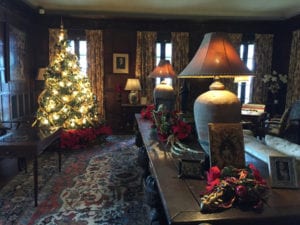
Lance Reinheimer, executive director of the Vanderbilt Museum, said “We’re grateful to these generous volunteers who give their time and talent to create an atmosphere of enchanting holiday grandeur and sophisticated living.”
The Suffolk County Vanderbilt Museum is located at 180 Little Neck Road in Centerport. General admission is $8 adults, $7 students and seniors and $5 for children 12 and under.
Guided tours of the mansion are given on Tuesday, Saturday and Sunday (and Wednesday to Sunday, Dec. 26 to 30 during school vacation) at regular intervals between 12:30 and 3:30 p.m. for an additional $6.
Special Twilight Tours will be given on Thursday and Friday, Dec. 27 and 28, from 5:30 to 8 p.m. This event is a treat for visitors, and the only time of the year the Vanderbilt family’s private living quarters can be seen at night. Hot chocolate and cookies will be served. Admission is $10 for adults, $9 for students and seniors and $5 for children 12 and under.
For more information, call 631-854-5579 or visit www.vanderbiltmuseum.org.
All photos from Suffolk County Vanderbilt Museum










